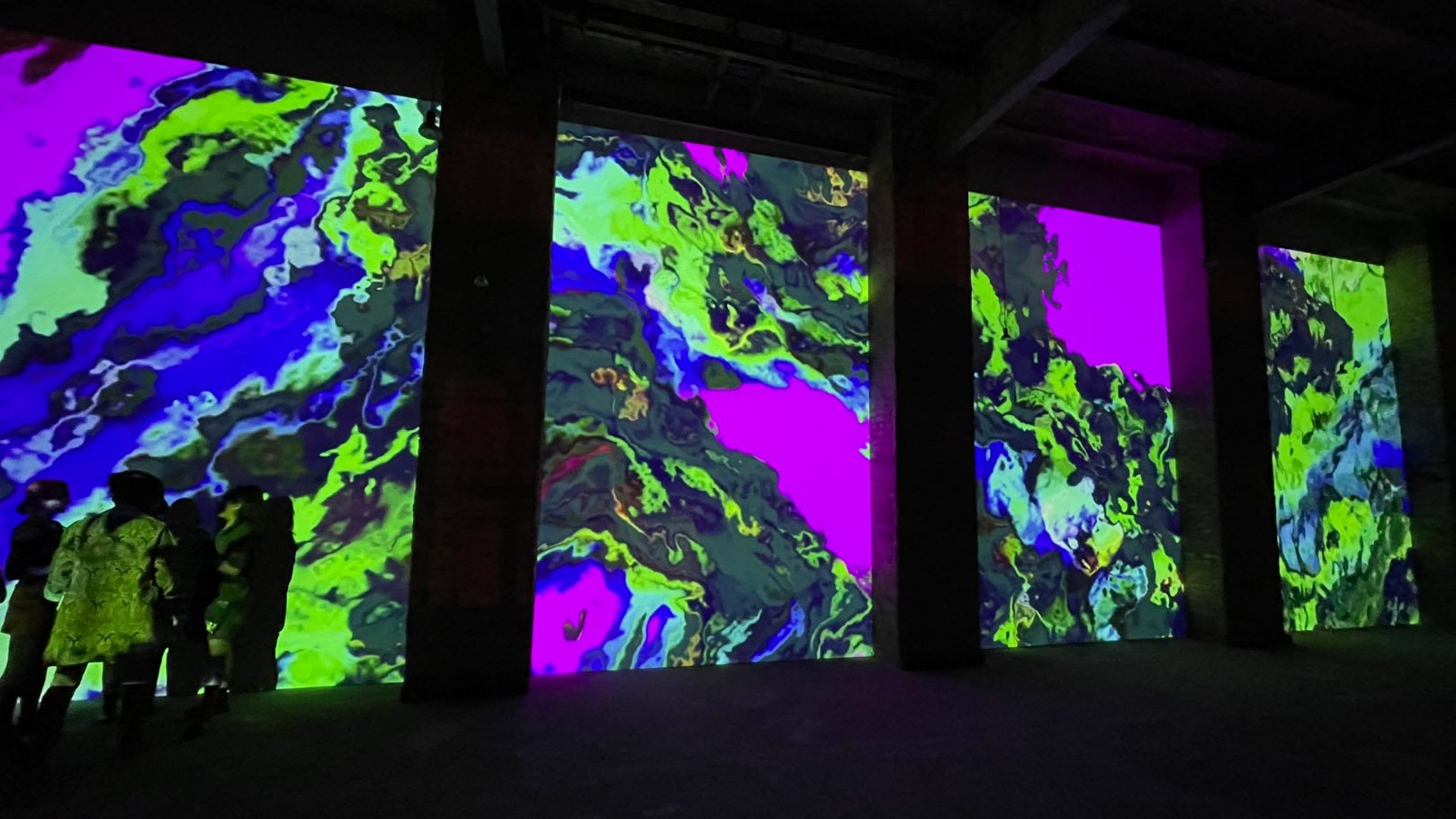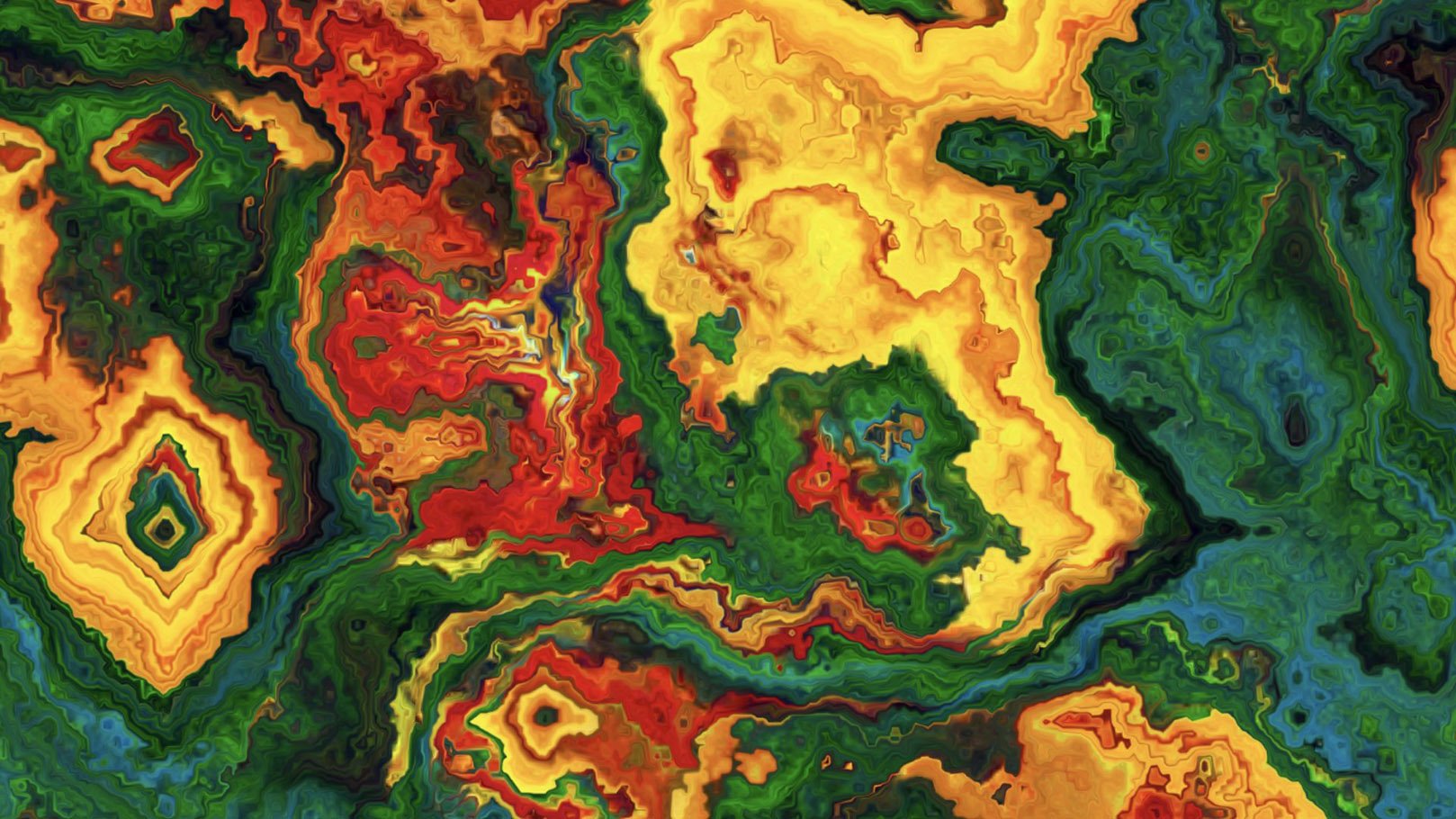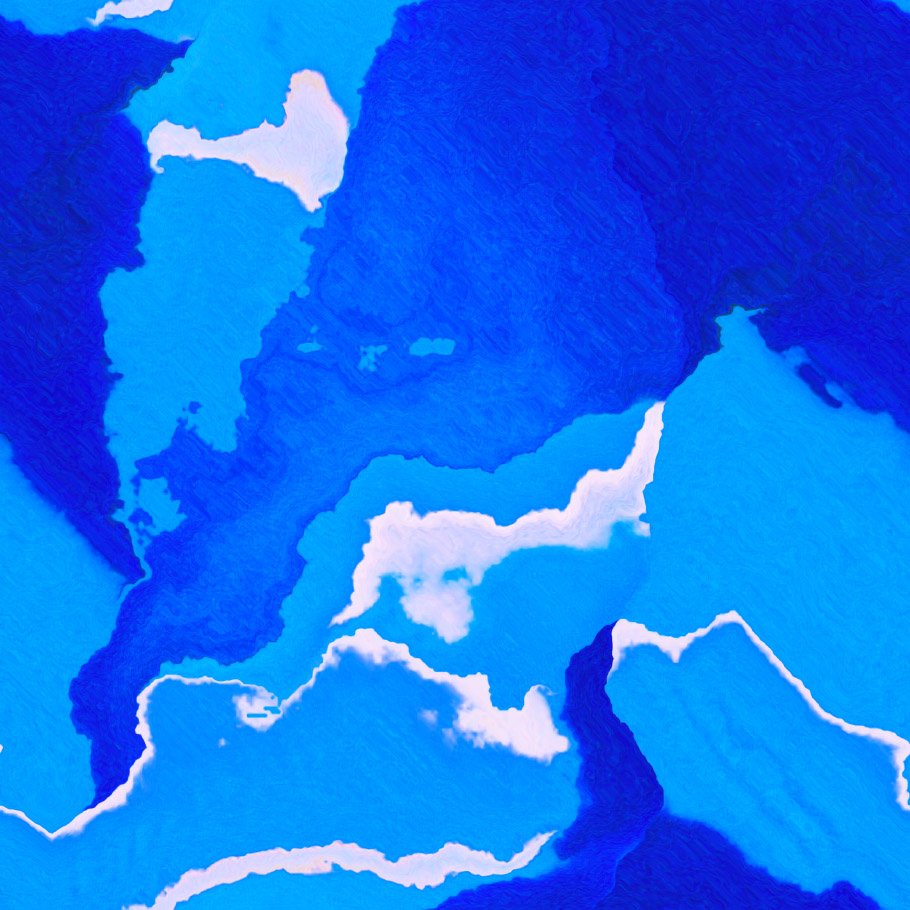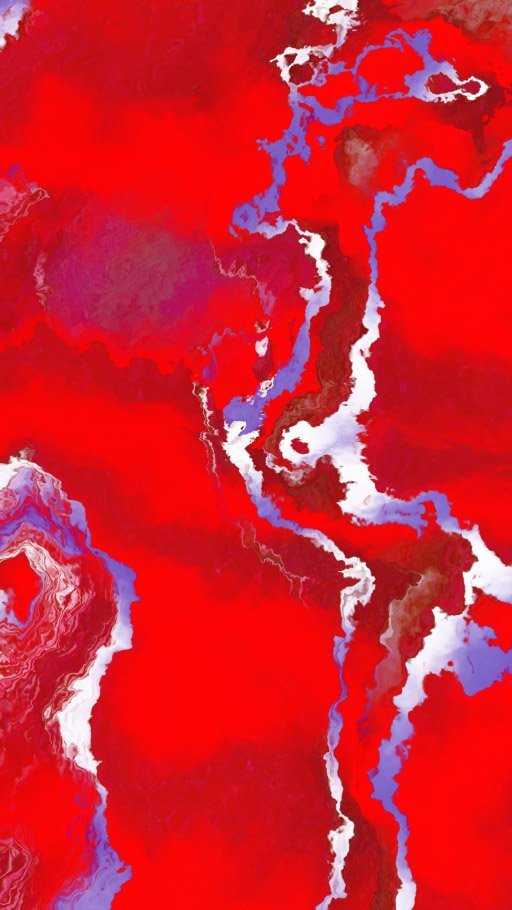Infinites AI+IRL
How does art affect time? How does time affect art? FAR’s work dives into the realm of the in-between - the merging world of art and technology. A display of intersections occurs: artificial intelligence and the human, time and art, and the literal interaction of a Generative Adversarial Network (GAN) and an on-chain Generative operation. The outcome: Infinites AI.
It has been over a year since we last spoke with you. What has changed since then?
When we last spoke, we were immersed in our bubbles due to lockdowns. Our window to the exterior was through screens—especially in Spain, where the lockdown was severe. In our last conversation, we talked about the representation of water with computer graphics, simulations, video games, and cinema. Back then, I was part of a few projects involving water simulations and artificial intelligence that were going to be shown at different institutions in the US and Europe. However, everything presential was canceled due to COVID-19 and went online.
For our last interview, I shared with you an image of a wave simulation on a smartphone. The artwork was going to be exhibited in a gallery space; however, due to the cancellations, I decided to show it online along with other wave simulations using Instagram Stories.
I never was a fan of centralized platforms such as Instagram or Facebook, especially for showing artwork; however, the centralized platforms were where most people could engage with the artwork. At that moment, I thought that something was missing, and this is when I started to explore better options for sharing digital artwork online.
Can you explain the process in the creation of your Infinites projects?
The idea behind Infinites was to overlap two computational gestures from relevant technologies: artificial intelligence and blockchain, within the studio art practice. For years, I have been very interested in machine learning and the gesture of having AI generate art, which has been used already by many artists and creators experimenting with these tools to create new kinds of artwork.
As part of my interest in AI, I trained a generative adversarial network (GAN) with History of Painting, using an extensive archive of digital images of paintings with a public domain license covering painting across several hundreds of years. Having an archive of references for your art practice is common. However, building a dataset for a GAN differs greatly since the number of images can be much higher.
Though we may already be familiar with the aesthetics of the images produced by GANs, they constantly attract our attention. The subjects and compositions try emulating those created by humans, but when we look closely at them, they seem trivial and lack rationale. Nevertheless, I was intrigued by how colors palettes had greater harmony and, since the dataset covered such a significant period, were not tied to any specific period.
I have also been involved in crypto and blockchain for several years. In 2018, after joining the Decentralized Autonomous Kunstverein (DAK), I started getting in touch with other artists working with blockchain as a subject and medium. Since then, I have sought ways to utilize the technology in my studio practice.
I experimented with minting NFTs in 2019 but only began establishing a studio practice around it earlier this year as I began looking at the medium for developing more significant projects. While already working with a GAN trained with an extensive art history archive, I thought merging another computational layer could lead to an exciting new development, when Infinites started taking their initial shape.
As mentioned, I was intrigued by how atemporal the color palettes generated by the GAN were. Simultaneously, we deal with time when we deal with the blockchain. So I devised the idea of utilizing a real-time simulation where AI-generated images would be diluted permanently on a digital canvas. Smart Contract converts data from the Ethereum network into inputs shaping a fluid simulation over images the GAN generated to accomplish this operation. This on-chain generated layer dilutes the images, as if all the original paintings that the GAN learned from, which are long since dried, are now malleable again, forever.
Why is the concept of time so important to you and your work?
Infinites is about time.
I first spent a long time curating a dataset based on digital images of paintings, photographs, or scans, that span hundreds of years. Then, when we deal with the blockchain, we deal with time. The on-chain operation generates artwork with a dated blockchain record imprinted on the real-time fluid simulation over the AI-generated images.
Where is it possible to view your work IRL?
Infinites AI and IRL can be seen on public installations like the one in Times Square in NYC and the installation in Lisbon during the ETH week. The body of work can also be seen on infinites.ai as well as Opensea:
Why do you find it important to create art that evolves over time?
The inscription of time is something inherent to art. If you go to any museum, you can see it on every surface: paintings, sculptures, and in the museum itself. Since NFTs are based on Smart Contracts, they make it possible for art to be programmable, thus having its own life after creation.
Marshall McLuhan states that "The medium is the message." Why do you use blockchain as your medium?
The blockchain is an exciting technology that can serve several purposes to artists. Not only can it be utilized as a platform where artists can store their work, sell it, receive royalties, and so forth, but it can also be used as a medium: That is the aspect I am more interested in.
In my practice, I am interested in the materiality of Computer Generated Images and the technical processes behind them. When I do work, I tend to engage with the tools and materials involved at technical, historical, and conceptual levels. For Infinites, we utilized on-chain data to generate the body of work.
The process of randomization is integral to your project. Do you find this important in everyday life, too?
I think on-chain artistic processes are a continuation of conceptual operations through art history. Utilizing a randomizer to generate inputs to build the real-time simulation is an operation that works within conceptual and digital art. For example, we can look at Throwing Three Balls in the Air to Get a Straight Line (Best of Thirty-Six Attempts), a photography project created by John Baldessari in which he threw three balls into the air in hopes that a snapshot might catch them aloft and aligned. He worked on an operation of chance in a way that is similar to the random minting processes at work.
On the other hand, to make something random on Ethereum is difficult since Ethereum is a deterministic Turing machine with no inherent randomness involved, so the operation itself is a challenge within the medium.
interview MEGAN FARRIMOND
What to read next





















